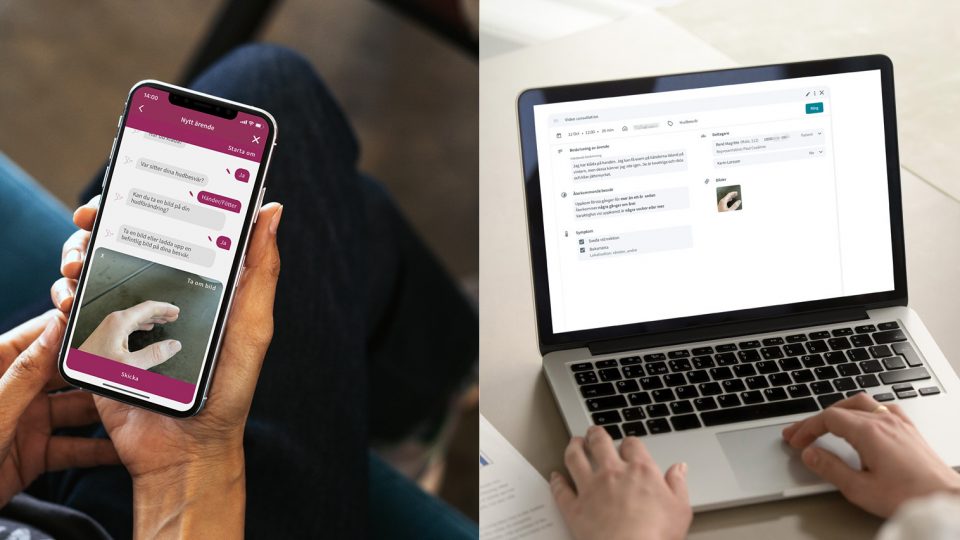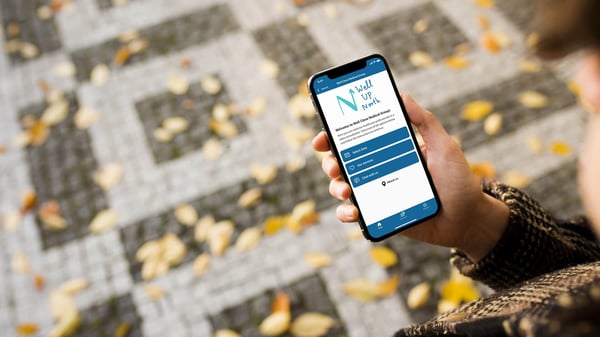By automating anamnesis and triage, the nurses’ valuable time is freed up and the patient can answer the questions in peace and quiet, in the place where they feel most secure.
Gradually, we have seen how healthcare providers let patients themselves take over certain tasks that have traditionally been performed by nurses or other healthcare professionals. The opportunity to contact healthcare via text messages or book an appointment online is something that most healthcare providers offer today. In order to free up additional time for the healthcare staff, more and more people are now also interested in the possibility of letting the patient describe their ailments and their medical history via an automated tool, e.g. a chatbot, instead of a nurse.
Steer the wheel
An automatically recorded anamnesis can, together with information about the degree of urgency, be compiled as background information for the healthcare provider who takes care of the case. It can also form the basis for digital triage, which prioritises and guides patients to the right level of care, occupational category, and type of visit. This can be, for example, self-care advice, a physical visit to a psychologist, a chat with a nurse, or a video visit to a general practitioner.
Decision support and prioritisation
By automating history recording and triage, the healthcare staff’s time is freed up, among other things to facilitate administration and the number of telephone calls to the reception can be greatly reduced. But another important point to mention is that with automatic prioritisation, the healthcare staff receives decision support that helps them directly distinguish which case they should look at in the first place. Instead of first come, first served, they now have an increased opportunity to provide care as needed. Each case can then be referred to the appropriate form of visit – video visit, message, or perhaps physical visit – and profession. The proper healthcare professional can take care of the right patient, right from the start.
Facilitate for the patient
Automated anamnesis and triage also mean benefits for patients. They avoid phone hours and queues, as they can contact the care at any time and answer the questions, in peace and quiet, from the place where they feel most safe. But for it to work, it is also required that the tool is so good that patients are positive to use it. It must be user-friendly, easy to follow, and should (at least in the long run) synchronise the patient’s self-generated data with the care’s. The questions asked must be relevant, reasonably numerous, easy to understand and answer. If this is not met, there is always a risk that the patient will choose another path to get in touch with the care.
Helps the healthcare professional
Can you always rely on an automated tool? It would be difficult to guarantee that an automated tool in 100% of cases will provide the correct proposal for diagnosis. But can we promise that a human being always does? It is not optimal either man or machine, but the combination of the two – at least today and a good time ahead. An automatic tool does the basic work and delivers proposals, which a qualified person then reviews, interprets, and uses as support in their work.
AI in the future
But what does the future hold? Who knows. It is not impossible that the machines can handle everything on their own. But then a future-proof tool is required that can be quickly adapted based on new conditions, which is self-learning and can take several external data sources.
The exponential technology, with AI, VR, and Big data, is spreading fast. Already today, there are several AI-based solutions in healthcare that almost sound a bit like science fiction: the ability to measure the patient’s vital parameters digitally during the anamnesis with the help of a camera that reads information from the face or image analysis of liver spots and other skin conditions, whose accuracy is at least as high as that of experienced doctors. Then we have smartwatches, apps, and other measuring tools that more and more people use to keep track of their values. But those data healthcare can not yet really handle. But maybe in a year? In ten years? It’s hard to guess, but we can probably be pretty sure that there are more and more incomparable tools and opportunities in a reasonably short time.
However, it is unlikely that the same software will be able to handle all this. Therefore, the winners of the future will probably be open systems, which create opportunities for collaboration with other tools and technologies. Just as the human-machine combination is superior to machine-only or human-only, the system that can integrate several different solutions will have the best conditions to meet different needs in the future.



